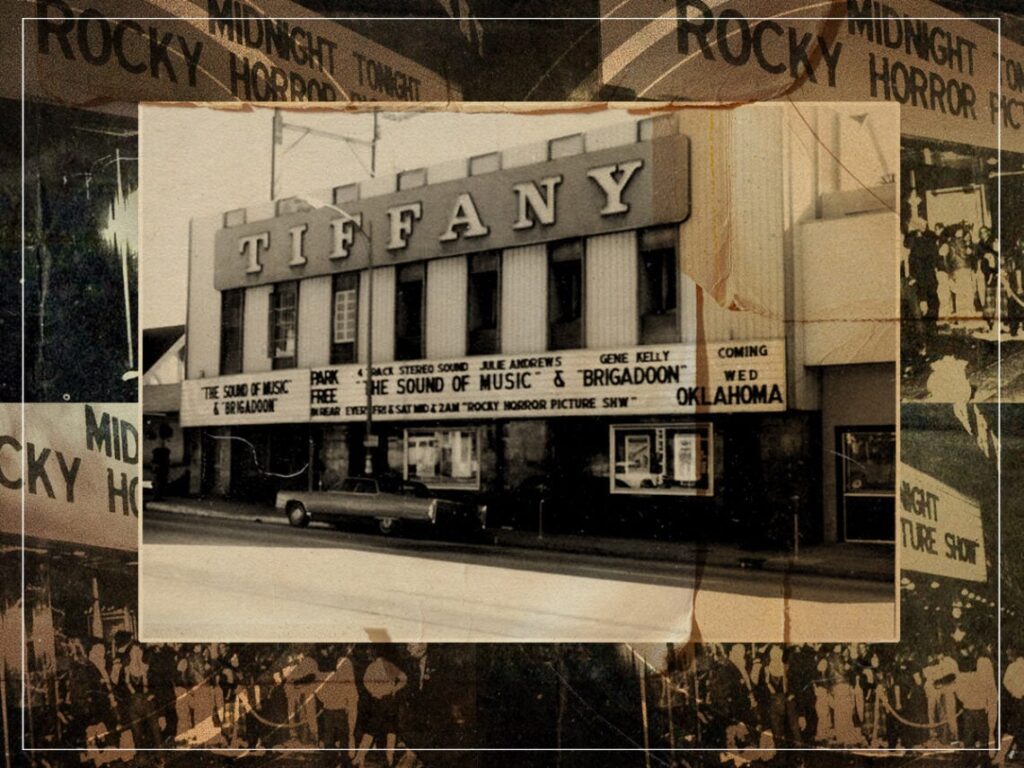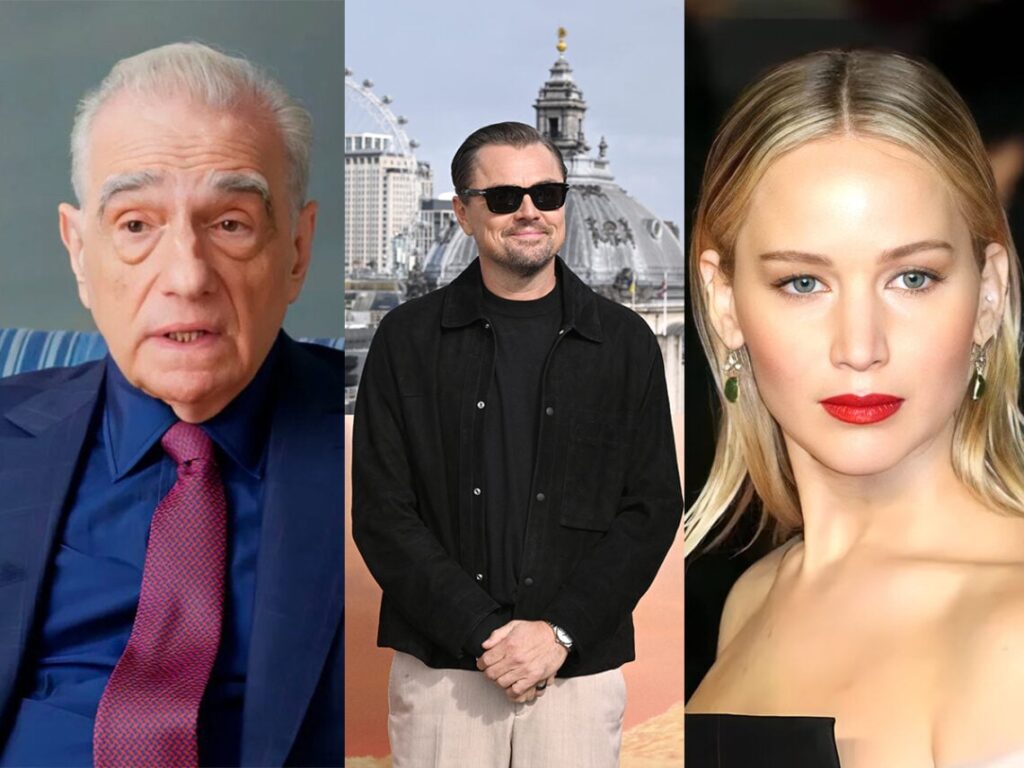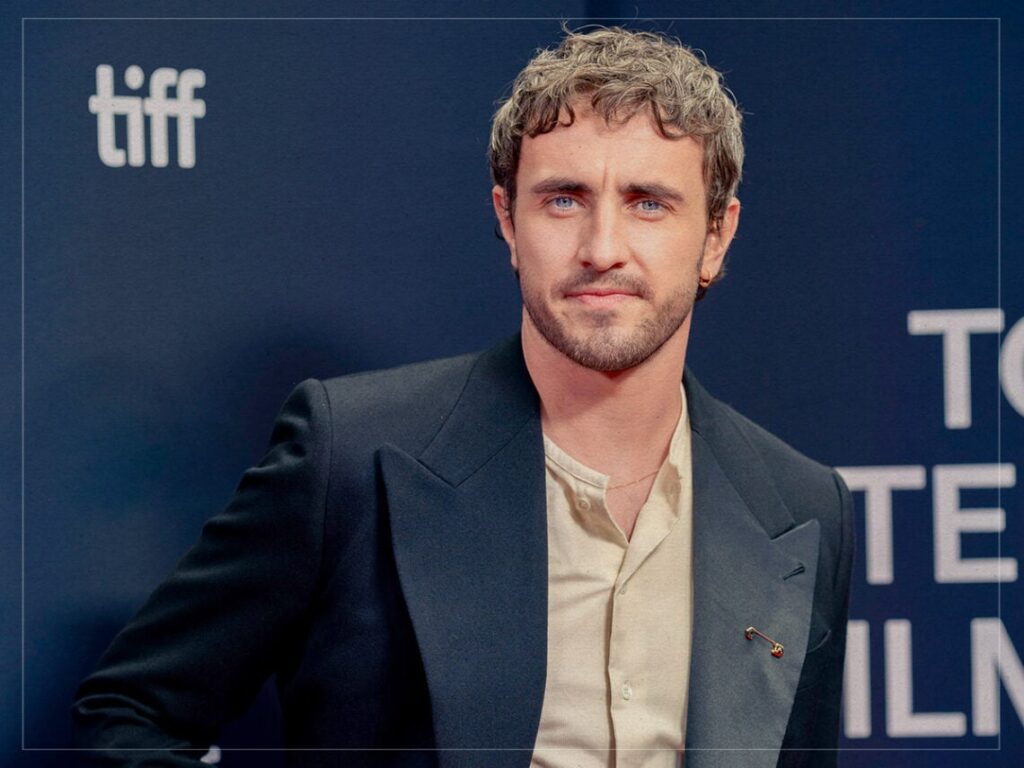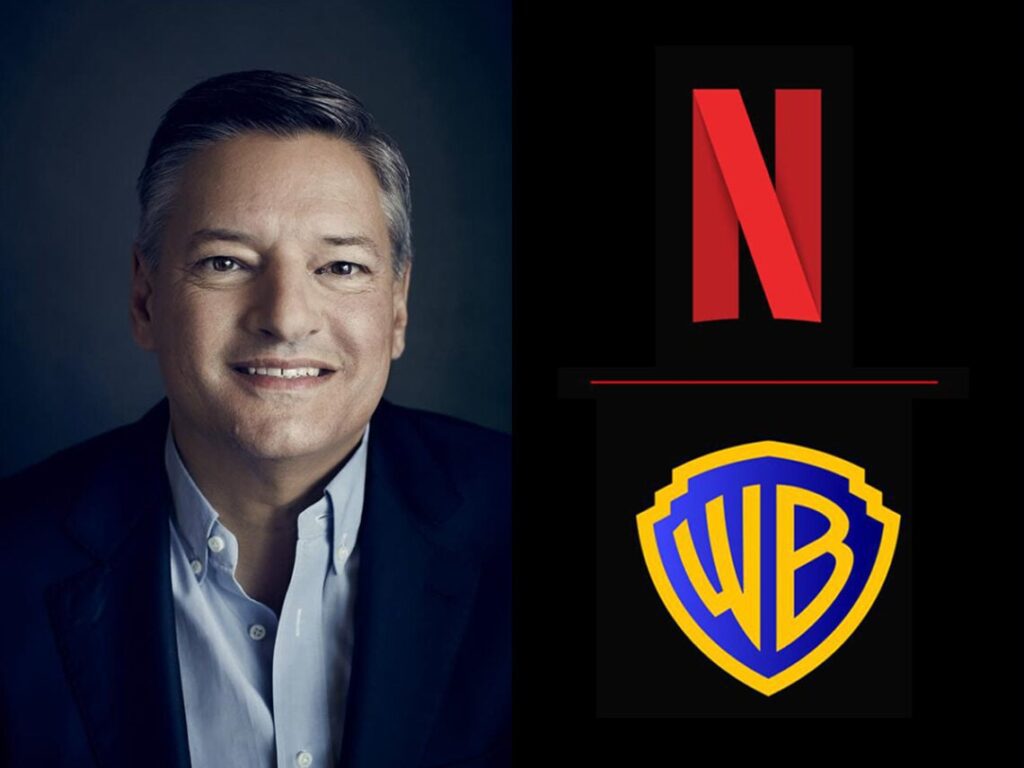How the Tiffany Theatre became the home of cult cinema
 Posted On
Posted On
(Credits: Far Out / Cinema Treasures)
Under normal circumstances, no cinema would ever want to be associated with a single film. After all, the entire point of the building is to show a wide array of movies that draw in an eclectic range of customers and patrons, but Los Angeles’ Tiffany Theatre ended up thriving due to its links to a cult classic.
Officially opened to the public in 1966, the Tiffany quickly gained attention for being the perfect place to watch 3D-projected movies. The main auditorium sat at an angle, which encouraged the proprietors to dust off many forgotten favourites from the initial boom period of the 1950s and ’60s, introducing them to a brand new audience with a more immersive experience than the one offered the first time around.
However, little did anyone connected to the building know at the time, but the release of beloved musical horror comedy The Rocky Horror Picture Show in the summer of 1975 would open the doors to the golden years of the Tiffany, even if it took a while to set things in motion.
Ironically, it missed out on the movie’s initial theatrical run completely, having closed in the mid-1970s prior to a grand reopening in March 1977. At the time, it was presented as a revival theatre that held screenings of vintage films, established classics and overlooked deep cuts, although Tiffany’s entire reputation changed forever three months later.
On June 10th, 1977, the Tiffany began holding midnight showings of The Rocky Horror Picture Show every Friday and Saturday, which gained such widespread attention that it soon blossomed to become somewhere between a pilgrimage and a mecca site for those obsessed with the adventures of Tim Curry’s Frank-N-Furter and the cabal of eccentric oddities that surround him.
Audience participation had already proven to be a key part of Rocky Horror’s appeal, but the Tiffany took it to the next level. While it continued to do what every self-respecting cinema does and show films from the length and breadth of Hollywood history all day, every day throughout the week, when those midnight screenings began, it took on an entirely new identity.
Eventually, Rocky Horror started playing twice a night at the weekends, and for a spell the Tiffany was the only theatre around with the original and uncut version of the film that ended with the song ‘Super Heroes’. There was pre-show entertainment from performers dressed as the characters, motorcycles were known to charge up and down the aisles during ‘Hot Patootie’, and people queued on the street for the chance to experience it for themselves, with media coverage only enhancing the legend.
Curry and co-star Susan Sarandon even turned up for a midnight showing at one point, with Barry Bostwick dropping by on occasion, too. In fact, a number of celebrities were known to descend upon the Tiffany for their fix of Rocky Horror madness, including Jane Fonda, David Carradine, and Steve Vai.
It was never going to last forever, sadly, and the last midnight showing of Rocky Horror came in March 1983. The Tiffany shut down again, reopened again, introduced live theatre into its programme of events, and became the home of the Actors Studio for a spell in 2004, but shuttered later that year and remained unoccupied until it was demolished in 2013.
The Tiffany might not be there anymore, but for anyone who willingly entered into the cult of The Rocky Horror Picture Show, it’ll live forever as the hub of perhaps the cultiest cult classic of them all.
[embedded content]


